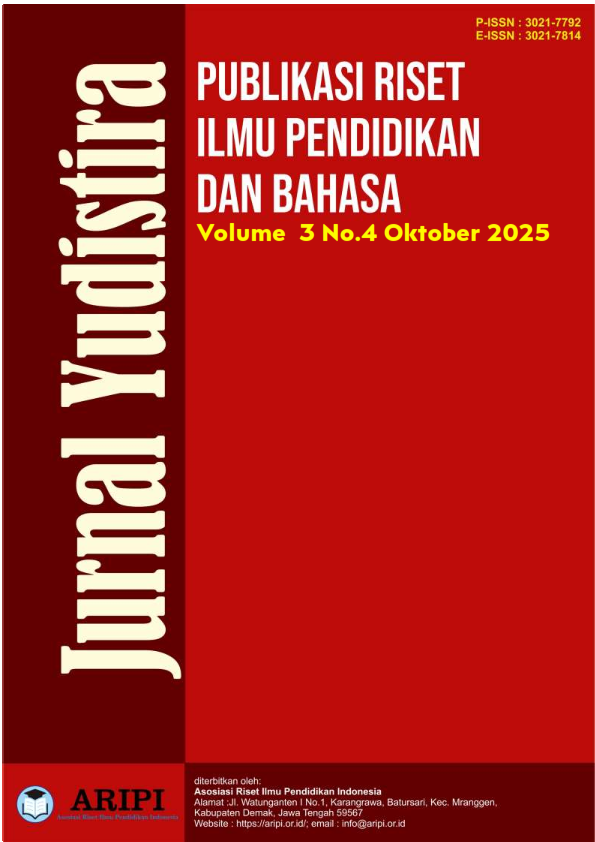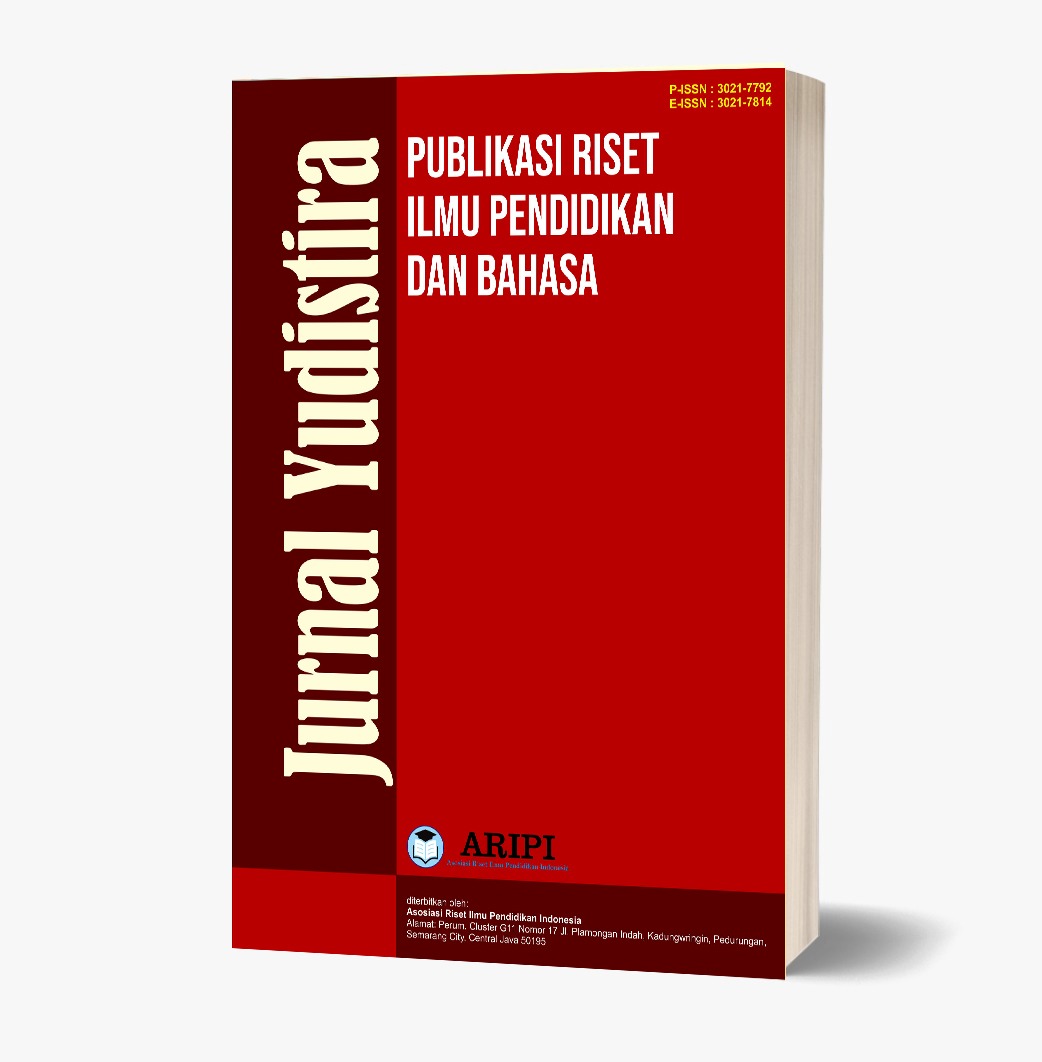Analisis Kecanduan Penggunaan Smart Phone pada Siswa di MTs Hikmat Tuttulu Kecamatan Tapango Kabupaten Polewali Mandar
DOI:
https://doi.org/10.61132/yudistira.v3i4.2304Keywords:
smartphone, morals, students, character education, MTs Hikmat TuttuluAbstract
This study aims to determine the effect of smartphone use on the moral formation of students at MTs Hikmat Tuttulu, Tapango District, Polewali Mandar Regency. The background of this study is based on the phenomenon of increasing smartphone use among adolescents, including students at the junior high school level, which has a direct and indirect impact on their behavior and moral formation. The method used in this study is a quantitative method with a descriptive approach. Data were collected through observations, questionnaires, and interviews with students and teachers at MTs Hikmat Tuttulu. The results of the study indicate that smartphone use has a significant influence on the moral formation of students, both from the positive side such as access to Islamic information and increased insight, as well as the negative side such as a tendency towards deviant behavior, reduced social interaction, and neglect of adab values in daily life. Therefore, an active role is needed from parents, teachers, and schools in guiding the wise use of smartphones to support the formation of noble morals in students.
Downloads
References
Agung, B. (2024). Pemanfaatan smartphone dalam pendidikan. Guepedia.
Ambarwaty, U. D. (2018). Pengaruh kontrol diri, kesepian dan sensation seeking terhadap kecanduan smartphone pada remaja (Skripsi, Fakultas Psikologi UIN Syarif Hidayatullah, Jakarta).
Arsyad, A. (2011). Media pembelajaran. Raja Grafindo Persada.
Creswell, J. W. (2016). Research design: Pendekatan kualitatif, kuantitatif, dan mixed. Pustaka Pelajar.
Desmita. (2010). Psikologi perkembangan peserta didik. Remaja Rosdakarya.
Moleong, L. J. (2019). Metodologi penelitian kualitatif. Remaja Rosdakarya.
Miles, M. B., & Huberman, A. M. (2014). Qualitative data analysis: A methods sourcebook. SAGE Publications.
Misyaroh, D. (2016). Hubungan antara loneliness dengan mobile phone addict pada mahasiswa universitas negeri di Kota Malang (Disertasi tidak diterbitkan, Universitas Islam Negeri Maulana Malik Ibrahim).
Mutiara. (2025). Peran lingkungan keluarga dalam pembentukan identitas diri remaja. Prenada Media.
Muzaki. (2007). Pengaruh media televisi terhadap perubahan pola pemikiran pada masyarakat desa: Studi kasus perubahan kehidupan sosial. [Tidak diterbitkan].
Nasution. (2018). Pengaruh media sosial terhadap perilaku remaja. Prenada Media.
Rahardjo, M. (2009). Sosiologi pedesaan: Studi perubahan sosial. UIN-Malang Press.
Safaria, T., Saputra, N. E., & Arini, D. P. (2022). Nomophobia. UAD Press.
Sarwono, S. W. (2014). Psikologi remaja. Raja Grafindo Persada.
Suryanto. (2020). Pengaruh teknologi informasi terhadap perkembangan remaja di era digital. Jurnal Psikologi dan Teknologi, 8(2), 123–132.
Yeni, F. (2023). Dukungan sosial, stres, dan kecanduan smartphone pada remaja. CV Mitra Edukasi Negeri.
Downloads
Published
How to Cite
Issue
Section
License
Copyright (c) 2025 Jurnal Yudistira : Publikasi Riset Ilmu Pendidikan dan Bahasa

This work is licensed under a Creative Commons Attribution-ShareAlike 4.0 International License.







